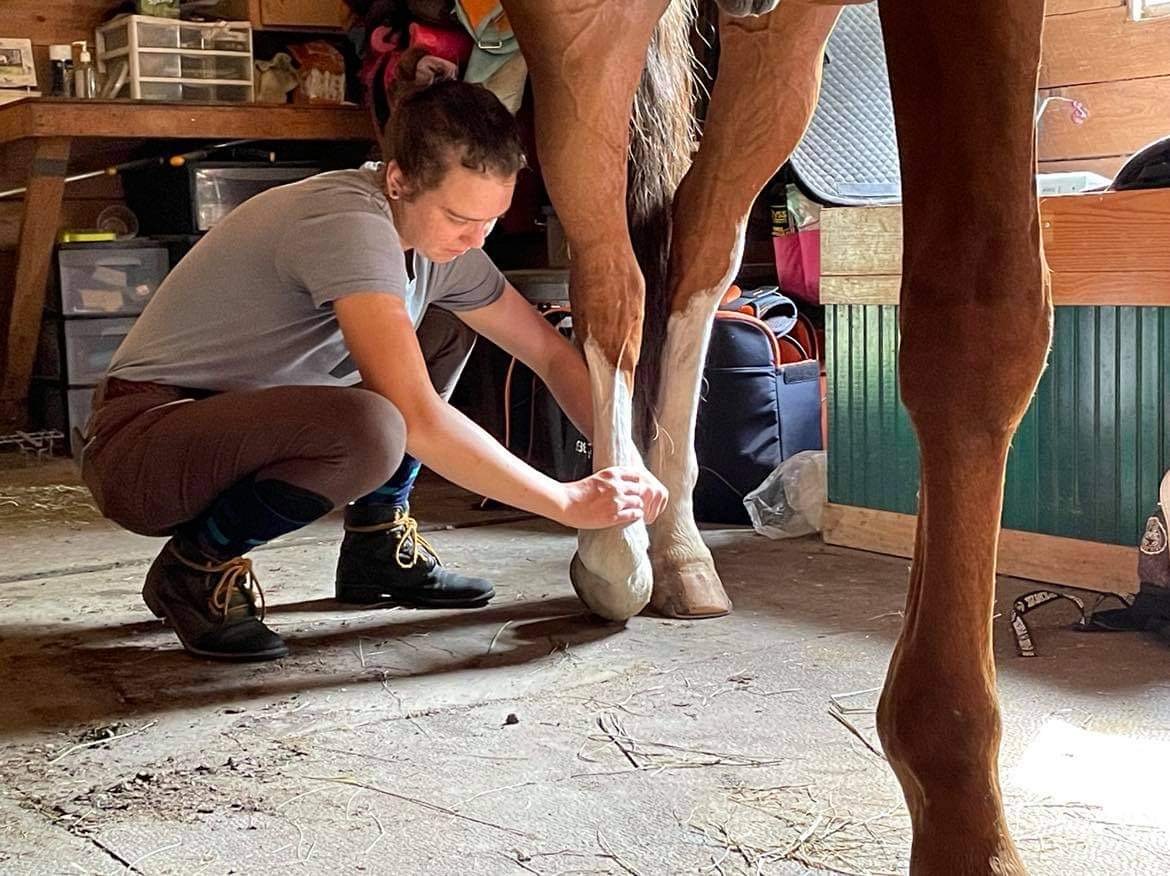What to expect from your horse’s Equine Fascial Integration series
Equine Fascial Integration Therapy (EFIT)
A collaborative and species-informed approach to Structural Integration
A re-imagining of Ida Rolf’s approach to helping human bodies find biomechanical neutrality., the Equine Fascial Integration Therapy (EFIT) series takes into account the specific evolutionary and neuromuscular needs of the horse as a species. The EFIT series consists of six sessions - general opening, appendicular skeleton (the limbs), axial skeleton (the spine and hyoid), and three individualized sessions.
Developed by April Johnston of The Equine Institute, the series combines elements of sleeve work, differentiation work, and integrative work into every EFIT session. This approach creates a seamless, relaxed path by which the horse is able to move through their re-balancing journey. By combining all three elements into each session, Saxon, as the advanced EFIT practitioner, is able to guide the animal non-verbally through the sessions while minimizing abrupt or disruptive changes to the horse’s posture or proprioception, and encouraging the horse to seek the down-regulation of their central nervous system.
Combined with Saxon’s background in academic research, and their commitment to collaboration with other equine professionals, the result of the EFIT series is a species-informed approach to structural work that takes all elements of the animal’s lifestyle and medical history into account.
Saxon and Certified Advanced Rolfer KaylaAnn McGowan speak about their Rolf/EFIT workshops “Collected Connections”
Saxon speaks about fascia, structural integration, and the relationship between the body and the hoof with Alicia Harlov of The Humble Hoof
Saxon and Wally explore session four at The Equine Institute intermediate training.
Polestar Farm, Lake Stevens, WA August 2021
Comprehensive movement evaluation
Saxon will ask to see the horse move in straight lines at walk and trot for several passes at the beginning of your horse’s sessions 1, 4, 5, and 6. If there are positional issues ( difficulty picking up leads under saddle, reluctance to back up, etc.), be prepared to demonstrate them, or have video handy. This is NOT a lameness examination. Saxon only assesses biomechanical and fascial line function for the purpose of informing manual bodywork sessions and does not diagnose lameness.
Full-body range of motion testing
Saxon will visually assess the horse’s structure and posture, palpate superficial fascial lines, and explore range of motion in numerous joints. Be prepared to answer their questions about your horse’s reactions or habits. Some guardians find it helpful to keep notes handy for easy reference. Range of motion testing accompanies movement evaluation at the start of sessions 1, 4, 5, 6. These services are included in the base session fee.
The half-series | peeling the orange
Sessions 1, 2, and 3 unwind the superficial holding patterns and begin the process of differentiating the pieces of the body to allow each muscle space to work effectively. By sequentially unwinding the subcutaneous “under the skin” tissues, the tissues of the appendicular skeleton (limbs), and the tissues of the axial skeleton (spine and hyoid), Saxon will facilitate the beginning of enhanced conversation between the segments of the body.
The full series | unwinding the individual
Sessions 4, 5, and 6 build upon sessions 1, 2, 3. Saxon will use their understanding of equine biomechanics and the relationships of the quadruped fascial lines to create an individualized approach to your horse’s pattern of holding. Your horse’s breed, their job, and their lifestyle contribute to the way they perform. Actualize their potential by addressing primary sources of strain with a collaborative, individualized approach that accounts for as many variables as possible.
Reinforcing movement patterns - stretching and groundwork coaching
Through the course of your series, Saxon will introduce stretches and groundwork exercises for you to do with your horse between sessions to help deepen the conversation between your horse’s musculoskeletal system or ‘hardware’ and their neuromuscular system or ‘software’ by contacting and manipulating the elaborate web of fascial sheets that connect and protect the pieces of the horse’s body.
Structural restoration - fewer tune-up sessions
Most horses see Saxon every 6-8 months after moving through their six sessions of the EFIT series. Saxon will work with you to make the right decision regarding frequency of tune-up sessions for your horse and your goals.


